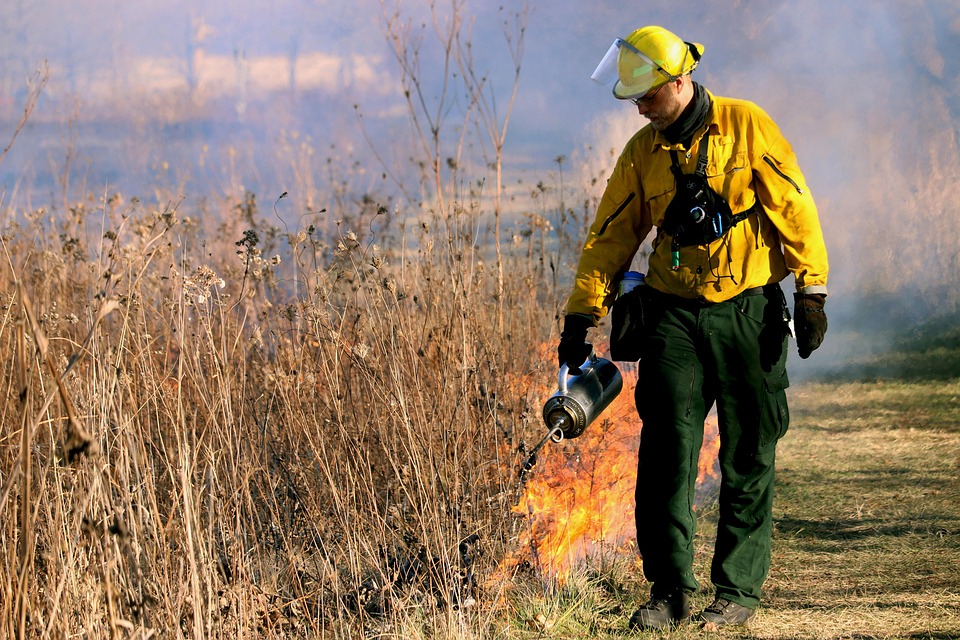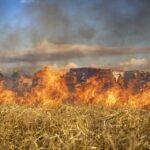Wildfires are a natural part of California’s ecosystem, but the escalating intensity and frequency of these blazes, especially in places like Los Angeles, have become a growing concern. In 2025, California, specifically Los Angeles, faced one of the worst wildfire seasons in recent history. With the Palisades Fire engulfing over 23,000 acres, the community witnessed firsthand the devastating consequences of these infernos. Understanding the causes of wildfires is crucial to not only mitigate the damage but also develop proactive strategies to safeguard lives and property.
1. Climate Change and Drought Conditions
One of the most significant drivers of wildfires is climate change. Over recent decades, rising temperatures, extended heatwaves, and shifting precipitation patterns have contributed to prolonged periods of drought. This has left California’s vegetation, especially in Los Angeles, parched and more susceptible to ignition. According to a study by the California Department of Forestry and Fire Protection, increasing temperatures coupled with less rainfall have led to drier forests and more volatile conditions, making it easier for wildfires to ignite and spread. In early 2025, these factors combined to create a perfect storm for wildfire activity in Southern California.
Droughts, in particular, are a major contributing factor. When vegetation becomes dry and brittle, it serves as perfect tinder for any spark. As climate change accelerates, these droughts are expected to become more frequent and prolonged, further heightening the risk of wildfires in California, including in cities like Los Angeles. The combination of drought and heatwaves in the spring and fall of 2025 made for an extremely dangerous wildfire season in the region.
2. Santa Ana Winds
Another critical factor in the spread of wildfires is the Santa Ana winds, which are dry, hot winds that often blow through Southern California, especially during the fall. These winds can gust up to 60 mph, rapidly spreading wildfires over vast areas. In Los Angeles, these winds have contributed to some of the most destructive fires in history. The Palisades Fire of January 2025, for example, saw its rapid spread fueled by these powerful winds, making it nearly impossible for firefighters to contain the blaze in its early stages.
The Santa Ana winds serve to carry embers from one area to another, igniting new fires miles away from the original source. These winds increase the intensity of wildfires, making them harder to control and more dangerous for residents. Understanding the seasonal nature of these winds and preparing for them is key to reducing their impact on fire behavior.
3. Human Activities
While natural factors such as climate and winds play a significant role in the spread of wildfires, human activities remain the leading cause of fire ignition. In Los Angeles, human errors such as discarded cigarettes, unattended campfires, and sparks from power lines have contributed to the outbreak of many wildfires. A major contributing factor to wildfires is the improper management of fire hazards in both rural and urban settings.
For instance, in 2025, the Palisades Fire began as a result of an electrical malfunction that sparked a fire in a densely vegetated area. Over 150,000 people were forced to evacuate as the fire spread quickly across the county. Reducing human-caused wildfires is an essential part of any wildfire prevention strategy. Public education campaigns about fire safety, improved infrastructure, and stricter regulations on outdoor activities are vital steps in reducing the number of fires caused by human negligence.
4. Lightning Strikes
Although lightning strikes are not as common in Southern California as they are in other parts of the country, they still represent a significant threat. Dry conditions make it easier for lightning to spark fires in the dense brush that often covers the region. In areas of Los Angeles that are heavily wooded or covered in dry vegetation, lightning can ignite a blaze that quickly grows out of control.
Advances in weather forecasting and the use of early-warning systems have allowed for better prediction of lightning strikes and their potential impact on wildfires. In 2025, efforts to track lightning strikes and respond rapidly helped contain some of the fires in Los Angeles, although the sheer volume of fires was overwhelming.
5. Invasive Plant Species
Invasive plant species have also been a significant contributor to the spread of wildfires in California. Non-native plants, like cheatgrass, grow more quickly and are more fire-prone than native species. These invasive plants can dry out much faster, providing more fuel for fires. As a result, they’ve exacerbated the frequency and intensity of wildfires, especially in areas like Los Angeles where such plants have become widespread.
Managing invasive species is essential for reducing the amount of flammable vegetation in wildland areas. Proper land management practices, including controlled burns and targeted removal of invasive plants, can help reduce the risk of fire spread in the future.
6. Urban Expansion and Wildland Interface
As California’s cities, including Los Angeles, continue to grow, the wildland-urban interface becomes an increasingly significant concern. The wildland-urban interface refers to the zone where urban development meets wildland areas. As more homes and infrastructure are built in areas prone to wildfires, the risk of catastrophic damage increases.
In 2025, the Palisades Fire threatened several neighborhoods, and many homes were destroyed as a result. Expanding into wildland areas without proper firebreaks, defensible space, and fire-resistant building materials creates a dangerous situation that can have disastrous consequences when fires occur. Communities must take proactive steps to safeguard properties by creating defensible spaces, using fire-resistant materials, and adhering to fire safety regulations.
7. Fire Suppression Policies
Historically, California’s fire suppression policies have focused on putting out fires quickly. While this approach has saved lives and property, it has also led to an accumulation of dead vegetation, which serves as fuel for larger fires. Fire suppression policies often result in the buildup of dry, dense brush, which increases the intensity and spread of wildfires once they begin.
Implementing controlled burns and better vegetation management practices can reduce the fuel load in forests and wildlands, making it harder for fires to spread out of control. The California Fire Safe Council is one of the organizations working to educate landowners and local governments on the importance of fire prevention and management through prescribed burns and other land stewardship practices.
8. Economic and Social Factors
Economic factors also contribute to the intensity and frequency of wildfires. Budget cuts and a lack of funding for fire prevention programs have hindered the state’s ability to effectively prepare for and respond to wildfires. Social factors, including poverty and a lack of resources for affected communities, can make recovery efforts more difficult, leading to longer-lasting impacts after the fire is controlled.
Improving fire prevention and emergency preparedness programs can help mitigate the damage caused by wildfires. These programs must address both the immediate needs of communities at risk and the long-term planning required to reduce wildfire risks over time.
9. Technological Advances
Technology has improved our ability to detect, monitor, and respond to wildfires. However, technological failures can also contribute to wildfires, as seen in incidents where power lines and electrical equipment malfunctioned and sparked fires. In Los Angeles, these incidents have resulted in large-scale wildfires that have devastated communities.
10. Public Awareness and Preparedness
Public awareness is key to wildfire prevention. In 2025, wildfires in Los Angeles saw widespread destruction, but much of the damage could have been mitigated through better preparation. Homeowners and businesses must be aware of fire risks and take steps to reduce these risks. Preparing emergency evacuation plans, creating defensible spaces around properties, and securing fire-resistant materials are all essential practices for wildfire preparedness.
Conclusion
The causes of wildfires are complex and multifaceted, ranging from climate change and human activities to invasive species and technological failures. As we continue to confront increasingly severe wildfire seasons, especially in areas like Los Angeles, it is crucial to understand and address these underlying causes. By implementing better land management practices, improving fire prevention strategies, and fostering public awareness, we can reduce the impact of wildfires and protect communities from their devastating effects.


